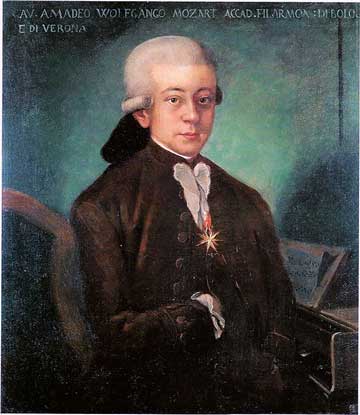Concert
Ave Verum Corpus, KV 618
Requiem, KV 626
by Wolfgang Amadeus Mozart
The Spectrum Singers
John W. Ehrlich, Music Director
Soloists:
Susan Pelletier, soprano
Lisa Bloom, mezzo-soprano
Charles Blandy, tenor
Ulysses Thomas, bass
First Church Congregational
Cambridge, MA
March 7, 2015
Written at the very end of Mozart’s life, the Requiem is known to have been mostly composed by him, but reputedly filled out and finished by his friend Süssmayr. There are places, particularly in the last third of the piece, when one suspects that there were less Mozart and more Süssmayr, but the distinctions are never so blatant as to withdraw a sense of this work as a unified expression of the composer’s genius and a spiritual summation of his work.
Many of the choral passages are, not surprisingly, very reminiscent of choral elements in Mozart’s late opera The Magic Flute (1791). When one hears these passages in the Requiem, one thinks immediately of the segments in the latter part of the opera in which Sarastro’s chorus evokes the spirit of intensely conscious moral development. In The Magic Flute, the prevailing philosophical spirit is Freemasonry, and in the Requiem it is Christianity, but, musically, their gestures and emotional intent call one another to mind.
There is so much great contrapuntal and fugal development throughout the Requiem that one wonders if Mozart were out to out-Bach Bach. It is so intricate and satisfying that one does not blink, but it really is much more like Bach than what we think of as Mozart.
The bulk of singularly great operatic work by Mozart is based on the humanistic libretti of Lorenzo da Ponte, a kind of operatic Shakespeare, and whatever spiritual grandiosity was conveyed there had to be revealed through his intricate and clever narrative idioms. Indeed, in those great operas, this is done beautifully and exquisitely, but one senses, in the grand choruses of the later The Magic Flute , even though it is a playful opera, Mozart’s desire to bring a more intently religious element to the fore.
This wonderful performance of the intense and emotional Requiem was richly nuanced, carefully balanced and dramatically punctuated. Director Ehrlich was highly adept and maintaining the balances, shaping the works with vivid and exact musical punctuation, and drawing a clear and nuanced sound from both orchestra and chorus, conveying, through carefully articulated phrasing, a clear and contrapuntally vivid rendering of this masterwork.
Chorus and orchestra were vivid, precise and sonorous. Soloists were resonant and compelling, with mezzo Lisa Bloom’s and bass Ulysses Thomas’ rich tonalities leading the way for soprano Susan Pelletier whose voice filled out beautifully with the tenure of the piece, and lyrically elevated tenor Charles Blandy. The acoustics of the church in which the performance took place muted some of the sound, but the performance was so clear and enunciated that the effect was to put a slightly soft edge around it, rendering an appealing result overall.
The concert opened with the very short Ave verum corpus, simple but lovely, with choral tonalities, as in the Requiem, vividly reminiscent of choruses in The Magic Flute.
Here are a few notes on the performance:
Ave verum corpus
Sonorous and peaceful, legato, nothing unexpected. Slight hints of chromatic development feed into major resolutions. Most evident is a nice balance between orchestra and chorus. The rich sonority is reminiscent of the final choruses in The Magic Flute. Short, sweet, nothing distinctively unusual, comforting, nice.
Requiem
A kinetic opening, not ponderous, director Ehrlich adeptly keeping it moving.
I Introitus
A full choral sound, with tonal suggestions of light. The soprano opening is most endearing when the voice comes from below. In “Hear our prayer,” the full force of the chorus comes to bear. There’s a nice balance throughout, with a continuing capacity to strike the necessary accents forcefully.
II Kyrie
A forceful entry is followed by a great, woven tapestry of sound. In this great fugal adventure, the brass charm but are not overpowering. The trumpet and cellos are set against the voices in a contrapuntal fest, as though Mozart were trying to out-Bach Bach.
III Sequenz
1. Dies Irae
Fervent, intense, like bellows, the chorus blows embers of wrathful judgment, with great orchestral perambulations, a string romp prevailing at the end.
2. Tuba mirum
The bass, rich and convincing in alternation with the trumpet. The tenor calls Tamino (of The Magic Flute) to mind, singing of the “book of judgment.” The mezzo-soprano, in lovely rich tones, speaks of “the judge.” The unison of soloists reappears, again, with strong reverberations of The Magic Flute.
3. Rex tremendae
Vivid, sparkling entry, prefiguring a bright choral “Rex,” striking like a beacon. A wonderful, glowing appeal – save me!
4. Recordare
Diffident, sweet string opening – cellos sonorous, followed by clear, mellifluous violins, followed by lovely alternation of male and female soloists, with a lyrically woven fabric upheld by the cellos, nicely sewn up.
5. Confutatis
Strong, judgmental male voices answered by plaintive, distant female ones, with lovely violin punctuations.
6. Lacrimosa
Such great yearning and pain! The chorus builds and shines: “Rising from the ashes.” The recapitulation is full bodied and forceful, framing what seems like the moral heart of the Requiem – grant them rest!
IV Offertorium
1. Domine Jesu
A wonderful chase, with Ehrlich keeping the pace going. A great contrast of dynamics pulled off in this additional fugue-fest.
2. Hostias
Reassurances, with urgency at the end re Abraham and his seed.
V Sanctus
“Holy, holy, holy” – a forceful opening, then another contrapuntal adventure. An abrupt end on “Osanna in excelsis,” pulled off very nicely.
VI Benedictus
A pastoral, with rich mezzo passages. A fugue on two lines unfolds itself with strong, deliberate playing, and a lovely, well-sculpted conclusion.
VII Agnus Dei
A tragic, sharp entrace full of choral force, again weaves a rich, full tapestry of voice offset by lyrical string runs.
VIII Communio
Feeding right in from the Agnus Dei, it is placid and sweet. The soprano, lovely, deep, rich, now in her element. The recapitualiton of the “pacing” motif from the opening of the Requiem appears, but sweet and resolved this time, not menacing and shadowy as at the beginning. Beacons of brass, solid and forceful, culiminate the piece, a dramatic penultimate hold anticipating the declaration of mercy for thy saints in eternity.
– BADMan


Leave a Reply